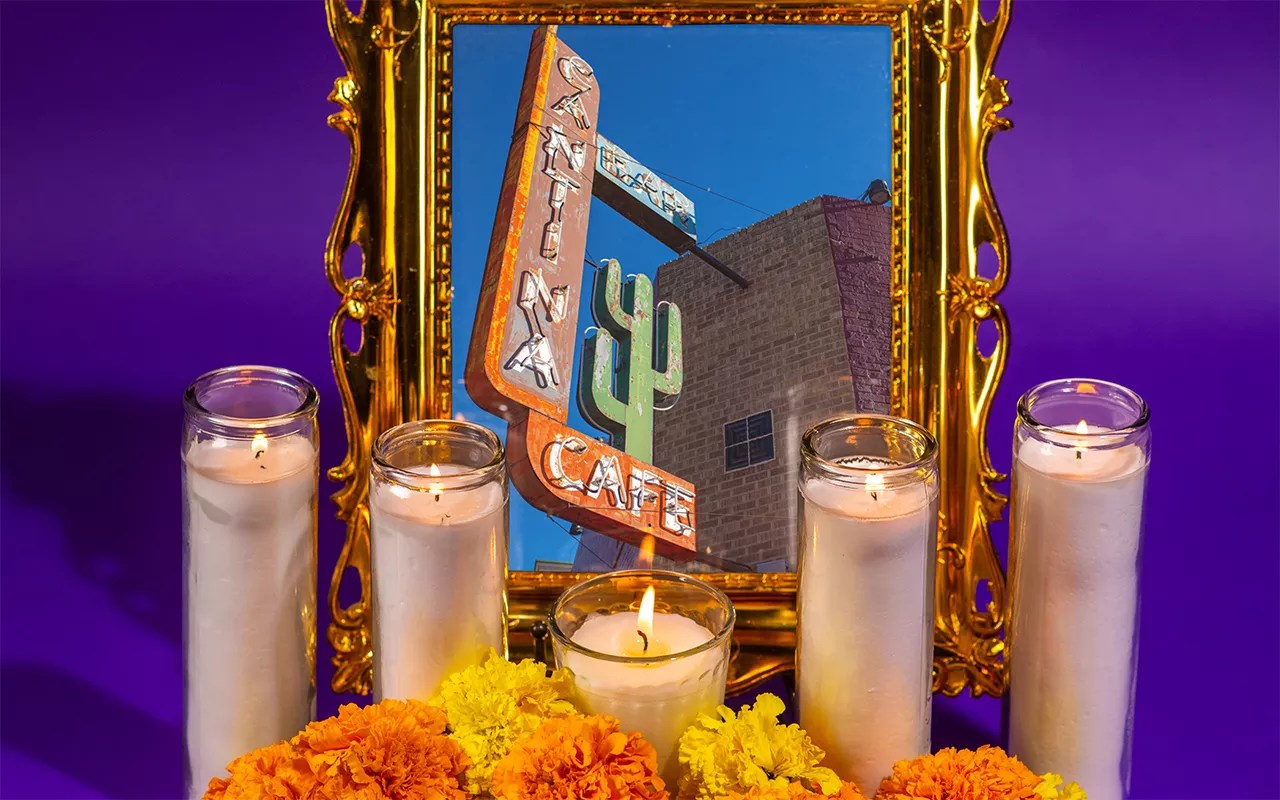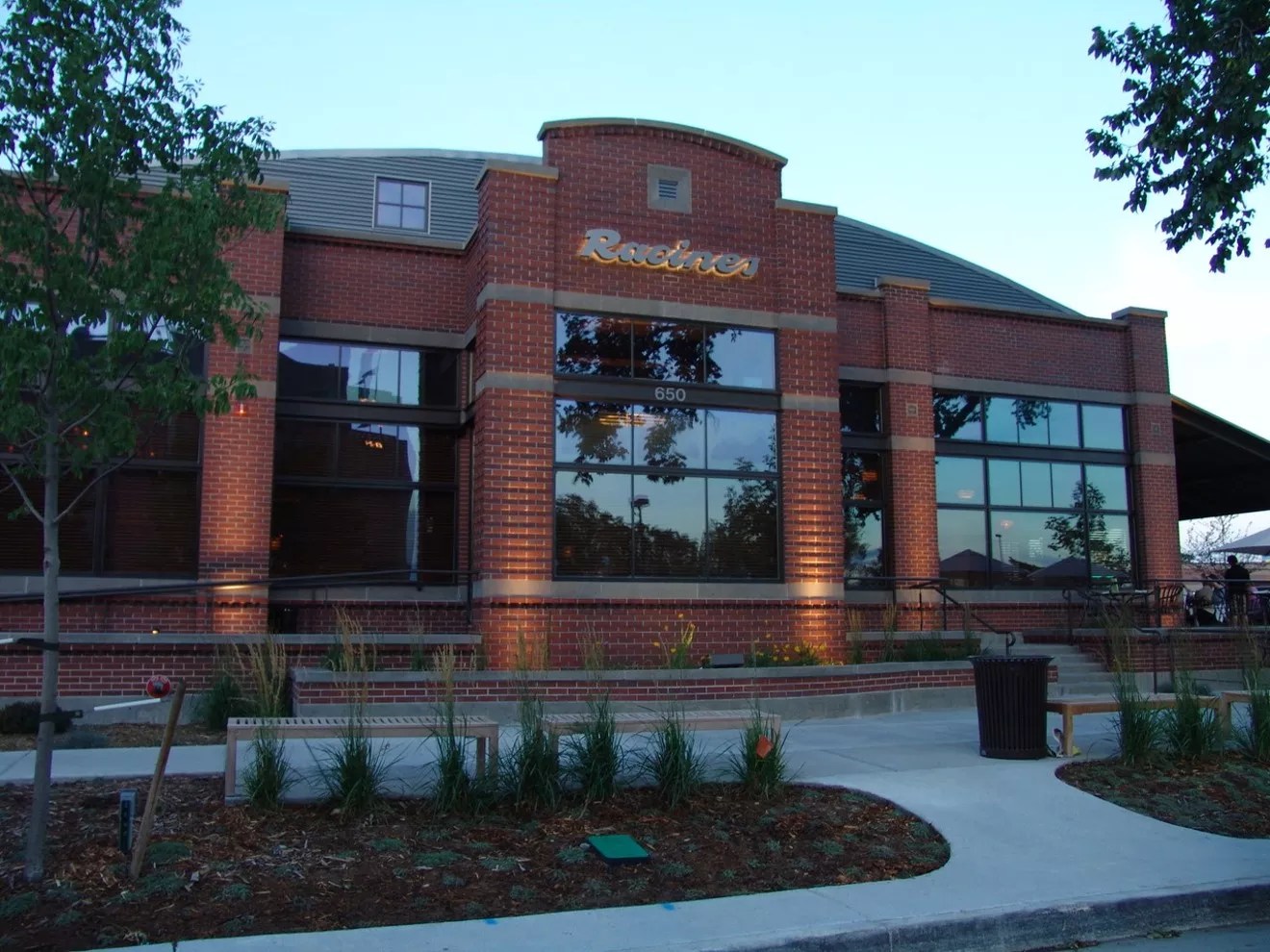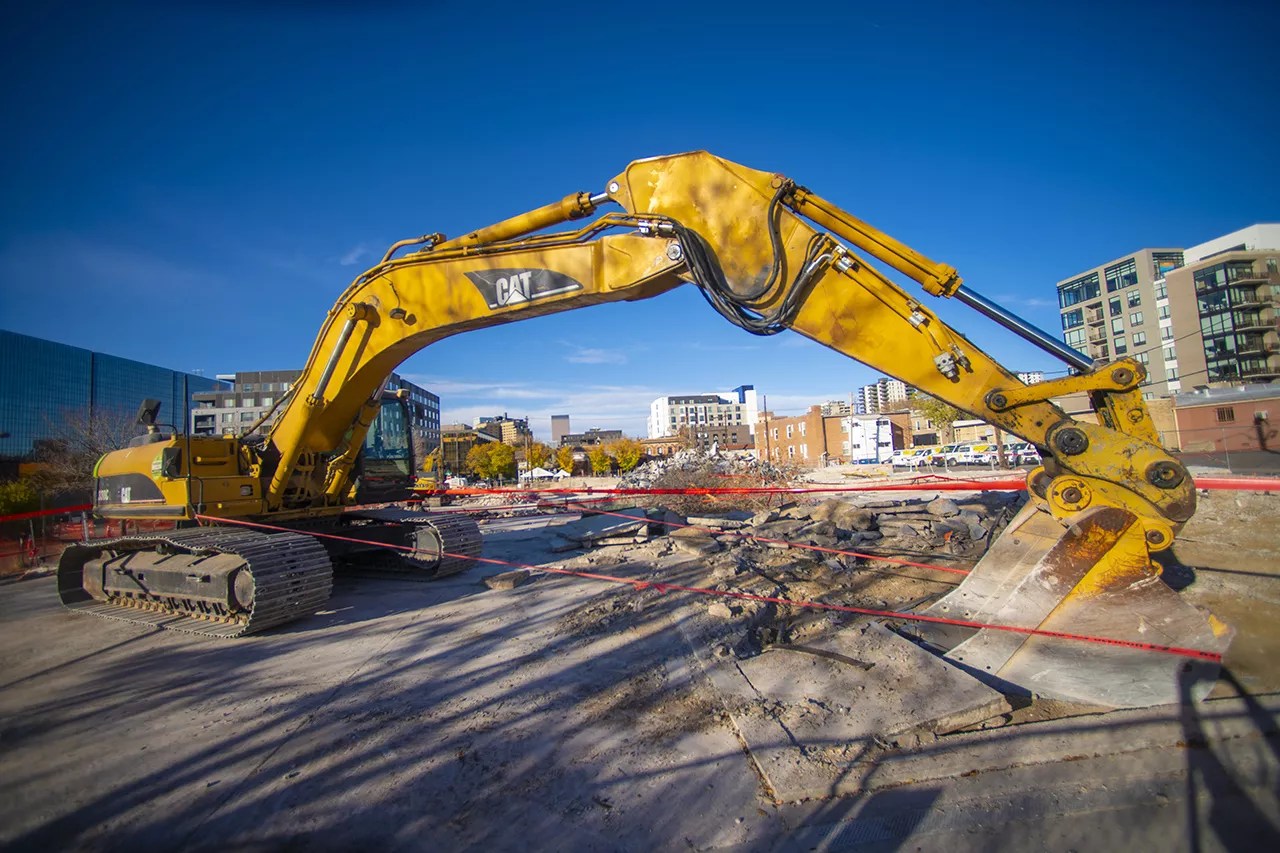
Evan Semón

Audio By Carbonatix
As people emerged from the pandemic shutdown, they were sometimes shocked by the city they saw – and howling at the moon quickly turned into howling at the mess. Behemoth apartment buildings seemed to have wiped out entire blocks of single-family homes and mom-and-pop shops. Beloved institutions were gone. Some of these developments had been in the works for years and had just gone relatively unnoticed. But other changes were swift.
Civility was suddenly MIA. All those new hot-chicken spots were hardly a consolation prize for the missing Home Depot hot dogs. Could pickleball really make up for the dearth of pickup basketball games? And then there was the loss of community gathering places that had done so much to define Denver and bring its residents together. Although COVID didn’t kill Racines, The Market or El Chapultepec, it certainly hastened their ends.
During these days of remembrance, we’re remembering some of the places we lost….

The building that once housed Racines disappeared altogether at the end of October.
Larry Laszlo
Denver, make your New Year’s Resolution Count!
We’re $17,500 away from our End-of-Year campaign goal, with just a five days left! We’re ready to deliver — but we need the resources to do it right. If Westword matters to you, please contribute today to help us expand our current events coverage when it’s needed most.
Racines
During the last week of October, the last vestige of Racines disappeared. The wrecking crew had already knocked down the half-block of buildings along Seventh Avenue east of Sherman Street, had moved on to the former dry cleaners that had been transformed into Max’s Wine Dive, then taken on the big parking garage that had recently served as unauthorized housing. Finally, the crew hit the empty shell of Racines, a local landmark at 650 Sherman. Knowing the end was near, I’d stopped by the week before to drink one last beer on a bench in front of the fenced-off building.
It was the last, but not the least, in a long series of goodbyes over the past twenty months. In many ways, though, the pandemic just hastened the inevitable. The surviving owners of the small restaurant chain that got its start with Goodfriends more than four decades ago had closed that restaurant in 2008, then three years later shuttered Dixons. (That downtown restaurant was named after a third partner, the late Dixon Staples.) And while Lee Goodfriend and David Racine had held on to their flagship, the massive Racines they’d built and opened in 2004 to replace the original in rented space at 850 Bannock Street, by early 2020 they were ready to retire. They had a deal in place to sell the property in January 2021, at which point they’d close the restaurant that had become a home away from home for so many in Denver, the preferred spot for a big celebration, a quick power meeting, an intimate dinner, a lonely drink.
The pandemic had just moved up their plans, in the process robbing them of their desire to host a fond farewell for this go-to spot, robbing customers of a chance to belly up to the bar one last time.
I had to settle for that beer on a bench amid the debris.
There’s a lot of debris left to sweep up in this town, as we all come out of hibernation to contemplate what’s left.
Around the corner from Racines, Benny’s – the popular Mexican restaurant started thirty years ago by legendary cook Benny Armas – has yet to reopen, and there’s been no word on whether the property might be sold for yet another residential/retail complex, which is what the Racines lot will become. Across the street, the corner that houses four Bonanno Concepts restaurants is for sale; a move to try to secure landmark status for the property was dropped early. The fight to save the nearby 7News building got a little further before it failed; convincing people in new Denver that Brutalist architecture is historic is, well, brutal.
All over the city, the transformations continue: The historic charms of Welton Street are now lost in a canyon of new builds, and the few old structures on Tennyson Street are overshadowed by similar monstrosities. There’s not a bit of breathing space on Brighton Boulevard, and the cranes are hovering over Santa Fe Drive.
So many of the places we loved are gone, and their potential replacements are not looking particularly lovely. – Patricia Calhoun

The Market has been transformed.
Evan Semón
The Market
My first trip to The Market was on my very first weekend in Denver. “Where can I go to get a sense of what Denver’s like?” I’d asked the girl I’d come to town to see. She took me to the Market and bought me a coffee and a macaroon. We sat in the front window and watched people on the small patio out front or walking by on Larimer Square, talked about the history of the street and the stores that lined it now. For me that day, Denver and the Market became one and the same.
Not that I’m unique in this. For decades, the Market was that place in Denver where everyone knew your name. Familiar. Welcoming. Like it had always been there and always would be. And then, suddenly, at the start of the pandemic, when the world was upside down and closures of old Mile High haunts were coming at a head-spinning pace, the Market rolled up its awning and pulled in its mat.
The Market had been opened at 1445 Larimer Street by none other than developer Dana Crawford back in 1978, a dozen years after she’d founded Larimer Square in order to bring this stretch of Larimer back from skid row status. It was then a small grocery – thus the name – and five years later, cheese suppliers Mark and Gary Greenberg bought the place from Crawford and turned it into what it would be for 37 years to come.
It’s hard to say how a thing becomes a thing, but the Market immediately became the place for people to meet in lower downtown, sandwiched between just-awakening downtown and the embryonic Auraria campus. Maybe it was the sweet lure of coffee, with what was said to be Denver’s first espresso bar long before Starbucks burned its first beans in town. Or maybe it was just a place born familiar, with the charm that old buildings have when they boast new life, along with the smells of good food cooking, of things being baked. For whatever reason, the Market seemed a spot to have been created just for you, and your friends, and the people in the wire-back bistro chairs at the table nearby who were gathering there before work, writing their novels, debating the latest movies, taking a break between classes, talking shop.
“The Market was at the core of the essence of Larimer Square – a true institution that accommodated people from all walks of life,” said Jeff Hermanson, CEO of Larimer Associates, when its closure after 42 years was announced in April 2020. One brother had passed away, and the other wanted to retire.
But the Market was the essence not just of Larimer Square, but of decades of downtown Denver. And that’s the loss. It’s not just about the space, which now hosts Larimer Records Cafe, one of the many new businesses on the block. It’s not about the missing deli sandwiches or the hot dishes or the whole cakes behind glass. Or the coffee, or the company, or the macaroons. It’s not even the sense of the years coming up from the wood floors and the tiled entry and the smiles on the folks behind the counter.
It’s about all of that. It’s about an era ending. It’s about what was and what is, and how they are suddenly and without measure in no way the same. – Teague Bohlen

El Chapultepec is slated to reopen as Cantina.
Evan Semón
El Chapultepec
Long before development exploded behind Union Station and along Brighton Boulevard, long before Coors Field opened, even long before the nickname “LoDo” was coined, there was El Chapultepec, which opened at 1962 Market Street the day after Prohibition ended in 1933. It went on to become one of Denver’s legendary jazz venues, and closed in December 2020 after a nearly nine-decade run.
Legend has it that even before it officially opened, the bar was operating during Prohibition as a speakeasy, and the ‘Pec’s colorful history doesn’t stop there. In 1968, Jerry Krantz inherited the bar from his father-in-law, Tony Romano. Krantz, who had spent time as a young man working in Chicago jazz clubs, originally booked mariachi bands to play the ‘Pec on the weekends. But it made its name with jazz, and many legends played that tiny stage, including Ella Fitzgerald, Chet Baker and Tony Bennett, along with such distinguished guests as rockers Bono, Mick Jagger and former president Bill Clinton.
While many a world-renowned jazz icon played at El Chapultepec, the venue also showcased some of the city’s finest players, including Freddy Rodriguez Sr., who headed up house bands for nearly four decades before dying in March 2020 at the age of 89 from complications related to COVID-19.
Countless young musicians stood by the venue’s side door, watching veteran players, learning the art form, absorbing jazz through osmosis – or sometimes by sitting in on the ‘Pec’s tiny bandstand. As a teenager, saxophonist John Gunther – today the director of the Thompson Jazz Studies Program at the University of Colorado Boulder – got an early schooling in jazz by that side door from such players as Gene Bass, Billy Wallace and Billy Tolles.
“It was such an important place for young musicians to learn,” Gunther says. “I was a white kid coming from the suburbs, and here were these older Black men passing on this Black American art form. They were welcoming. They were so generous and so patient. They didn’t have to do that. That was a really beautiful thing. There were many kinds of things learned from the experience playing there or just even maybe watching cats, just the things that you kind of soak in that really can stick with you over the years.”
Saxophonist Javon Jackson, who went on to play with Art Blakey’s Jazz Messengers on the band’s release album for Blue Note Records, and Brad Leali, who became part of Harry Connick’s Big Band, were other players who stood by the venue’s door as teenagers.
Ken Walker, long one of the city’s best jazz bassists, told Westword a decade ago that the ‘Pec was essentially his university, as he played there for twelve years – six of which were spent playing seven nights a week during the late ’80s and ’90s. “People asked how I stayed there for so long,” Walker says. “It was like an education. I really learned how to play there. Playing there seven nights a week – you can’t find that kind of experience anywhere.”
And now you can’t find it at El Chapultepec, either. Last December, Jerry Krantz’s daughters, who’d been operating the place since he passed away in 2012, announced that they were closing the club. Daughter Anna Diaz cited drunken Rockies fans disrupting shows and Denver’s explosive growth and safety issues as reasons for closing the venue.
“Whether it’s the tent city or the drunken mobs that are pouring out onto Market Street at two o’clock, it’s just really taking a toll on us, and it’s just that Denver’s different than it used to be, and 20th and Market is different than it used to be,” she said.
The building was leased to Valentes Corleons, who’s been remodeling it into Cantina. But he’s run into snags on permitting the place with the city – and he’s also been busy dealing with some sour notes involving Beta, his nightclub a block away, that Denver would like to declare a public nuisance. – Jon Solomon

The end of Racines.
Evan Semón
What do you miss the most?